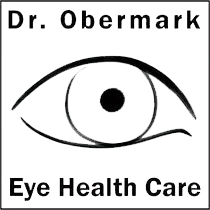Understanding Astigmatism

If your vision seems a little off—maybe letters look stretched, or you’re squinting more than usual—you could be dealing with astigmatism in Poplar Bluff MO and Sikeston MO. This common refractive error is caused by an irregular shape of the eye’s cornea or lens, and while it may sound complicated, managing it doesn’t have to be.
At Dr. Obermark Eye Health Care, we specialize in diagnosing and treating astigmatism. Our goal? To help you see clearly, comfortably, and confidently—without distortion or strain.
Understanding Astigmatism: What’s Really Going On?
Think of your eye like a camera lens. For sharp vision, light needs to focus perfectly on the retina at the back of your eye. In a healthy eye, the cornea (the clear front surface) is smooth and evenly curved. But with astigmatism, the cornea or lens has an uneven curve, more like a football than a basketball. This causes incoming light to scatter or focus unevenly, leading to blurred or distorted vision.
Astigmatism may be present at birth or develop later due to eye injuries, surgeries, or diseases. Despite old myths, it’s not caused by reading in dim light or sitting too close to the TV.
How Astigmatism Impacts Vision
Astigmatism often goes hand in hand with nearsightedness (myopia) or farsightedness (hyperopia), creating a mix of blurry vision both up close and far away. That means your eyes are constantly working overtime to compensate, which can leave you with eye fatigue, headaches, and that familiar urge to squint just to see clearly.
Left uncorrected, astigmatism can make reading, driving, or even using digital devices feel frustrating. It’s also a condition that tends to evolve with time, making regular eye exams a must for managing it effectively.
Signs You Might Have Astigmatism
Wondering if you might have astigmatism? Here are some red flags to look out for:
- Blurry or distorted vision at any distance
- Headaches after reading or screen time
- Frequent squinting or eye discomfort
- Difficulty seeing at night
- Eye strain, especially after extended focus
In children, signs might be more subtle. They may sit too close to screens, avoid reading, or struggle with schoolwork. Early detection in kids is crucial to prevent complications like amblyopia (lazy eye) or developmental delays in visual processing.

Diagnosing Astigmatism: What Happens During Your Exam
A thorough eye exam is the only way to know for sure if you have astigmatism. Our exams include several tests designed to pinpoint the shape and function of your eyes:
Visual Acuity Test: You’ll read letters on a chart to measure how well you see at various distances.
Phoropter Testing: You’ll look through different lenses to determine which prescription gives you the clearest vision.
Autorefractor: This machine estimates your prescription by measuring how light changes as it enters your eye.
Corneal Curvature Mapping (Topography): This advanced tool creates a digital map of your cornea, detecting subtle irregularities that cause astigmatism.
Keratometry: Another method to measure the curvature of your cornea, especially useful for contact lens fittings.
All of these tools help us create a complete picture of your eye health—and guide you to the most effective treatment.
Your Options for Astigmatism Correction
The good news? Astigmatism is highly treatable. Depending on the severity and your lifestyle, we’ll help you choose the best option for your needs.
Eyeglasses
This is the simplest and most common solution. Toric lenses in your glasses correct uneven focus caused by astigmatism, giving you sharp, consistent vision.Contact Lenses
Contacts made for astigmatism, especially toric soft lenses or rigid gas permeable (RGP) lenses, are excellent choices. For more complex prescriptions or corneal shapes, scleral lenses can offer superior comfort and clarity.Refractive Surgery
For those looking for a permanent solution, procedures like LASIK, PRK, or SMILE can reshape the cornea to correct astigmatism. Not everyone is a candidate, so we’ll perform a thorough evaluation before making any recommendations.
No matter your choice, we’ll walk you through the pros and cons to help you make a confident, informed decision.
Don’t Let Astigmatism Hold You Back
While it’s easy to ignore minor vision changes, untreated astigmatism can get worse over time. It can affect everything from your work performance to your safety on the road, not to mention your overall comfort.
At Dr. Obermark Eye Health Care, we take a personalized approach to vision care. Our experienced eye doctors at all our locations are here to answer your questions, explain your options, and help you see your best every day.
Ready to get clear, focused vision? Schedule your comprehensive eye exam today in Poplar Bluff MO and Sikeston MO and let us help you take the next step toward sharper sight, without the blur.



